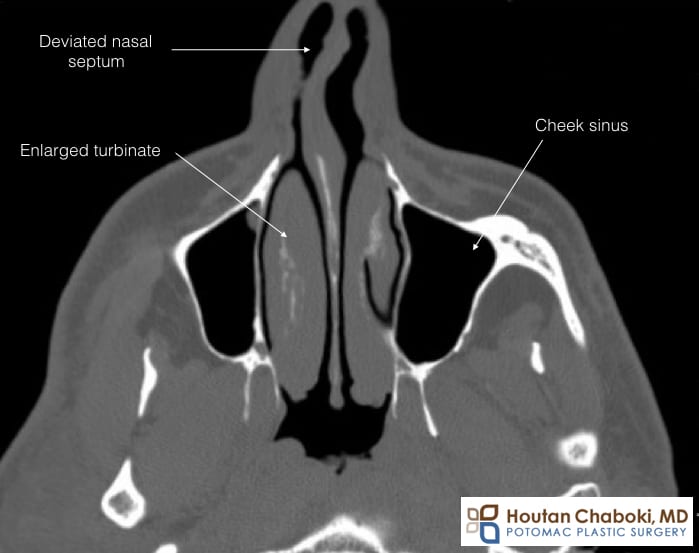We see many patients in our downtown Washington DC plastic surgery office, many of whom are interested in rhinoplasty to improve the appearance of the nose. Reducing a bump, narrowing or lifting the nasal tip, or improving symmetry are some of the most requested cosmetic improvements. Many patients may see a rhinoplasty specialist because they want to also breathe better thorough their nose.
Plastic surgeons and rhinoplasty specialists should examine the entire nose, inside and out, during consultation. You should discuss nasal congestion, allergies, and related medications with your plastic surgeon. While one may not experience nasal congestion or allergies before rhinoplasty, these symptoms may possibly develop after nasal surgery. Making a nose smaller with rhinoplasty without making the inside nasal passages larger might have a negative consequence on airflow. A rhinoplasty specialist will help determine appropriate options to improve both form and function of the nose.
For example, a deviated nasal septum is a common condition where the nose’s cartilage and bone are not entirely straight. The nasal septum is a wall of cartilage and bone that divides the nose into right and left chambers. A deviated septum is a normal variation that usually develops as the nose grows from childhood, but may also be the result of prior injuries or nasal fractures. Many patients with a deviated septum have allergies or congestion.
Rhinoplasty may or may not target other parts of the nose to improve nasal congestion: septum, turbinate, or sinus. Septoplasty improves the nasal passages by making a deviated septum straighter. Turbinate reduction makes enlarged nasal turbinates smaller. Sinus surgery opens the natural drainage pathways of the nasal sinuses. These other nasal procedures may be performed as necessary at the same time as rhinoplasty. Each rhinoplasty is unique, and the plastic surgeon will tailor the nasal surgery to the patient’s individual anatomy and preferences.
The photograph above shows a CT scan of the nose. This patient has a deviated septum and swollen turbinates, but a relatively normal sinus cavity. Their rhinoplasty may likely include septoplasty and turbinate reduction, but not necessarily sinus surgery. A preoperative CT scan is not always required and may only be ordered for patients who have nasal symptoms prior to a rhinoplasty.
Are you suffering from allergies or chronic sinusitis and considering rhinoplasty surgery? Share your thoughts below.


Leave a Reply